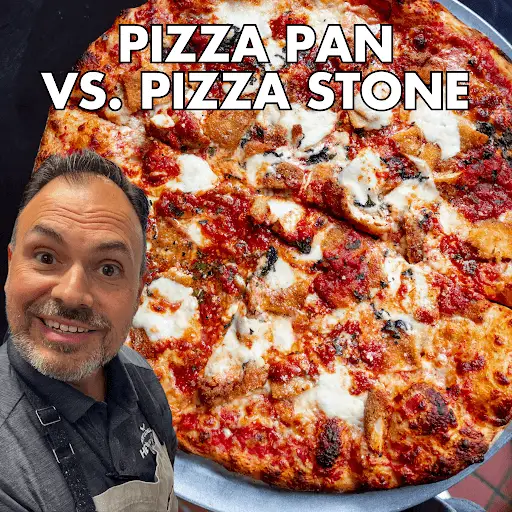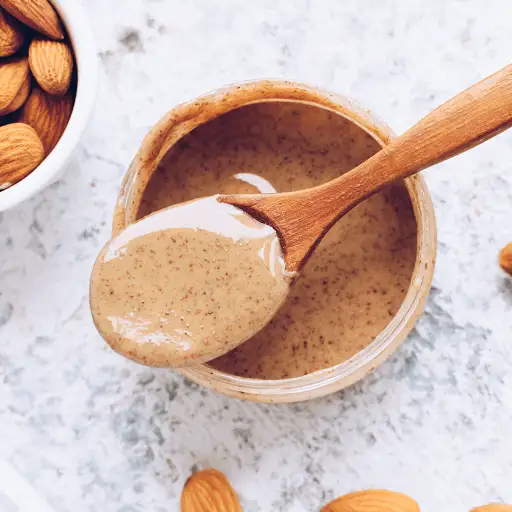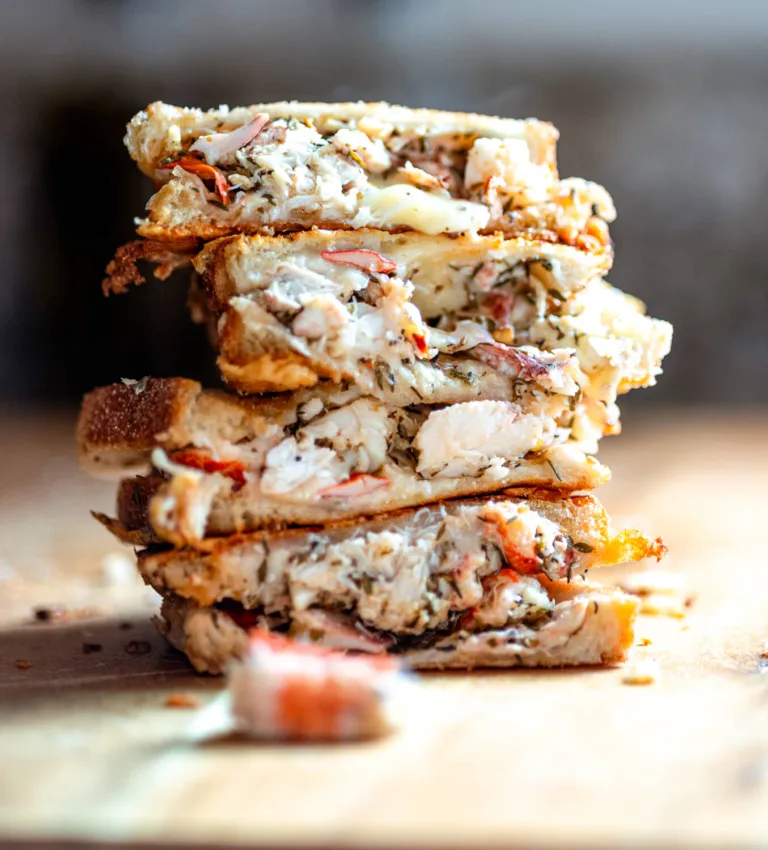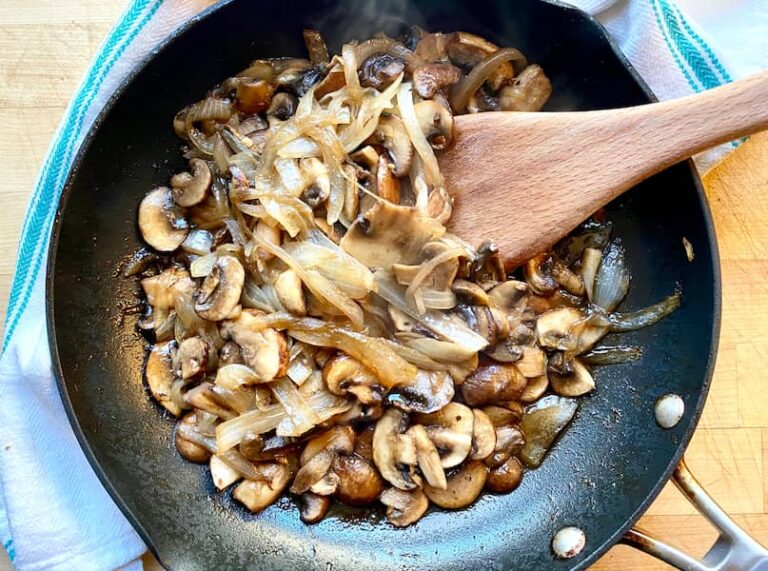As a pizza lover who’s obsessed with getting the perfect slice, I’ve spent countless hours experimenting with different cooking tools in my own kitchen.
Whether it’s the first bite of a perfectly crispy crust, or the satisfaction of slicing into a warm, gooey pie, there’s a lot to explore when it comes to making pizza at home.
And when it comes to the battle of pizza pan vs. pizza stone (and even pizza steel), I’ve got plenty to say about the advantages and challenges each option presents.
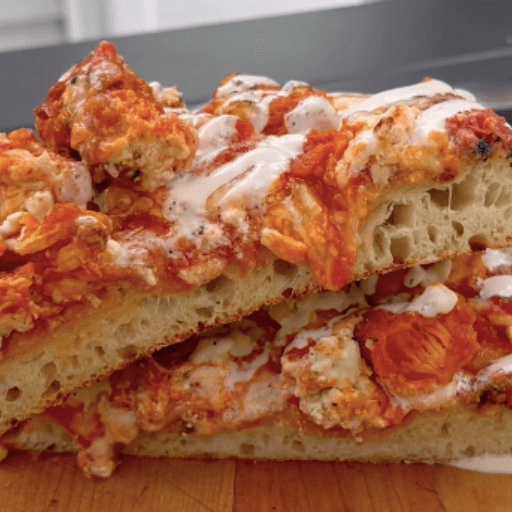
The Basics: Pizza Pan vs. Pizza Stone
Let’s dive right in—what’s the deal with these different pizza-cooking tools?
Pizza Pan: A pizza pan is your go-to if you’re looking for convenience and ease of use. They come in different shapes and sizes, from the solid pan to the perforated pizza pan, which has small holes designed to allow airflow and create a crispier crust.
Pizza pans are typically made from materials like aluminum or stainless steel, and some come with a non-stick coating, making cleanup super easy. You can find cast iron pizza pans, which are fantastic for heat retention, ensuring your pizza dough cooks evenly.
Pizza Stone: Pizza stones, made from materials like cordierite, ceramic, or composite, mimic the effects of cooking pizza in a wood-fired oven by heating up to high temperatures. The key here is that pizza stones absorb moisture from the dough, creating a crispy bottom crust while distributing heat evenly.
A pizza stone works best when preheated for a long time, and yes, it can make a world of difference if you’re serious about getting the best pizza at home.
But there’s another contender worth mentioning…
Pizza Steel: A pizza steel, like the Original Baking Steel, is essentially a flat slab of steel that heats up faster than a pizza stone. It has a higher thermal mass, meaning it can store more heat and cook the pizza faster, producing that crispy, well-browned crust you get in a professional pizza oven.
Pizza steels are incredibly durable and don’t risk thermal shock like some stones might, but more on that later.
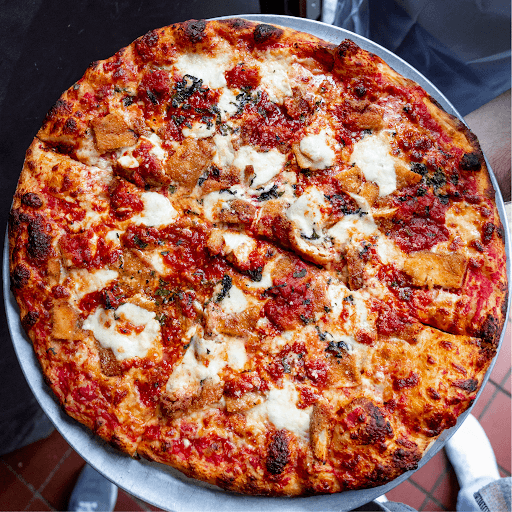
Cooking Pizza at High Temperatures: Which is Best?
When it comes to making pizza at home, high heat is key. The higher the temperature, the better your pizza will cook—especially when it comes to the dough.
Both pizza stones and pizza steels can handle high oven temperatures, which is crucial for getting that crispy bottom and perfectly cooked toppings.
One of the main differences between pizza pans and pizza stones or steels is the cooking surface and how they handle heat. While a pizza pan sits directly on the oven rack, pizza stones, and steels retain extra heat, giving your pizza an extra boost.
Pizza stones, particularly thicker stones made of cordierite, are excellent at retaining and evenly distributing heat, while steels add even more heat for faster cooking.
For home cooks like us, the choice depends on what you’re looking for:
- Want a crispier crust? Go for a pizza stone or pizza steel.
- Prefer ease of use and less fuss? A pizza pan might be your best friend.
But let me tell you, for the best results, nothing beats using a stone or steel. At Mortadella Head, we ship our Roman-style frozen pizzas all over the country, and one of the best ways to bake them at home is on a preheated pizza stone or steel.
The Perforated Pizza Pan: A Solid Choice for Crispy Pizza
I’ll admit, I have a soft spot for perforated pizza pans. Why? Because they’ve got those small holes that help create a crispier crust.
The airflow allows the dough to bake more evenly, especially at high oven temperatures, which means you’re more likely to get a pizza with that perfect balance of crunch on the outside and chew on the inside.
These pans are usually made from aluminum or steel, and they’re great for pizzas that need less baking time, like thin-crust pizzas. The best pizza pans will have a non-stick coating, making them easier to clean up after use.
Plus, they’re affordable and widely available, making them a great choice for beginners or casual home cooks.
Pizza Stone or Steel: Why You Should Consider Them
While pizza pans are easy to use, pizza stones and steels offer a level-up experience. Here’s why they’re a pizza lover’s best friend:
- Heat Distribution: Stones and steels both offer more even heat distribution, which results in a more consistent pizza crust.
- Thermal Mass: Pizza steels, in particular, have a high thermal mass, meaning they can handle sudden changes in temperature and cook your pizza faster without losing heat.
- Crispier Bottom Crust: Because both stones and steels absorb moisture from the dough, you’re left with a crispier bottom crust, perfect for Roman pizzas like the ones we make at Mortadella Head.
- Durability: While some stones may suffer from thermal shock (they can crack when exposed to sudden temperature changes), steels are practically indestructible.
Tips for Using a Pizza Stone or Steel
- Preheat the Stone or Steel: This is the golden rule. You need to preheat your pizza stone or steel for at least 45 minutes to an hour in a hot oven (around 500°F) for the best results. The extra heat ensures that your pizza cooks evenly.
- Use a Pizza Peel: You’ll need a pizza peel to slide your pizza onto the hot surface. Trust me, it’s the best way to avoid burning yourself!
- Parchment Paper or Cornmeal: For easy transfer, you can either use parchment paper or dust your peel with cornmeal. This prevents the dough from sticking.
- Proper Care: After using your stone or steel, let it cool completely before cleaning it. Avoid using soap—just a stiff brush and water will do for a stone, and a little oil for your steel will keep it in tip-top shape.
Cast Iron Pizza Pan: A Great Choice for Heat Retention
If you love cast iron pans, you’re in for a treat. A cast iron pizza pan is another great option for making delicious pizzas.
Cast iron pans retain heat really well and distribute it evenly, ensuring that your pizza cooks perfectly from top to bottom. They’re also incredibly durable and can go from the stovetop to the oven with ease.
What I love about using a cast iron pizza pan is how it helps create a crispy bottom crust while keeping the toppings moist. Plus, the pan doubles as a versatile kitchen tool—you can use it for other dishes like roasted vegetables, or even brownies!
Why Your Baking Surface Matters
One of the biggest factors in making great pizza is heat, and the type of surface you bake on can make or break the crust. The thermal mass of materials like stone or steel allows them to retain heat and deliver it to your dough. This creates a perfect, even bake, ensuring a crispy bottom crust and thoroughly cooked toppings.
Pizza Steel: The Powerhouse of Heat
Let’s start with the pizza steel. This tool is the ultimate choice for high heat retention. A pizza steel is typically a thick slab of metal, and its thermal mass helps it reach high temperatures much faster than a pizza stone. That means your pizza will cook quickly, producing a beautifully crispy crust, especially on the bottom.
- Thermal Shock Resistance: Unlike a pizza stone, which can crack if exposed to sudden changes in temperature, pizza steels are nearly indestructible. You can preheat them to scorching temperatures without worrying about them breaking down.
- Perfect for Crispy Crusts: Because the steel can get so hot, it works wonders for creating that golden, crisp pizza crust that many pizza lovers crave. The dough cooks evenly, and the bottom of the pizza gets that perfect charred look.
The only downside? It’s heavy. Handling a pizza steel, especially a thick one like the Original Baking Steel, requires a little muscle.
The Science Behind the Perfect Pizza Crust
Let’s take a moment to dig into the science of achieving that perfect pizza crust. Whether you’re using a pizza pan, pizza stone, or pizza steel, the ultimate goal is a crispy, delicious crust that holds up under all those mouth-watering toppings. The key here is heat distribution and thermal mass.
When you place your pizza on a pizza stone or pizza steel, the heat is transferred quickly to the dough, creating that much-desired oven spring. This initial burst of heat causes the dough to puff up, forming a light, airy interior while keeping the outside crispy.
The stone or steel retains heat, ensuring that every inch of the crust is evenly cooked. If you’ve ever wondered why professional pizza ovens create such great pizzas, it’s because they operate at higher temperatures, and using the right tools at home can help replicate that experience.
Even if you’re using a pizza pan, preheating it can help achieve a crispier bottom crust. The goal is to avoid a soggy bottom by allowing the crust to cook quickly before the moisture from the toppings can seep in.
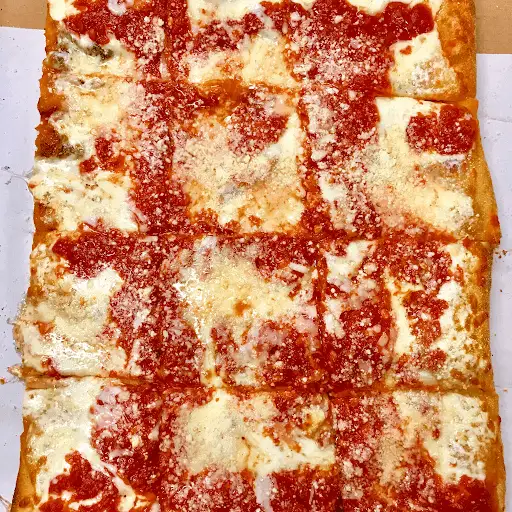
Choosing the Right Tool for Your Pizza Night
Ultimately, whether you’re a fan of a pizza steel for its unbeatable heat retention, a classic pizza stone for its traditional baking method, or a handy pizza pan for its ease of use, each tool has its benefits.
If you’re serious about pizza making, experimenting with these tools will help you perfect your craft. And remember, when you’re baking one of Mortadella Head’s frozen Roman pizzas, using a pizza steel or stone will give you that crispy crust and perfectly baked toppings we’re known for.
Pizza Night with Mortadella Head’s Roman Pizzas
At Mortadella Head, we’ve perfected the art of Roman pizza. Whether you’re using a pizza pan, stone, or steel, our frozen pizzas are designed to give you that restaurant-quality experience right in your home kitchen.
Roman pizza is known for its crispy crust and delicious toppings like San Marzano tomatoes and fresh mozzarella.
For pizza night, I always recommend preheating your pizza stone or steel before cooking. This helps get that crispy crust we all love.
Don’t have a stone or steel? A perforated pizza pan will also do the trick!
Pizza Steel vs. Stone: Which is Better?
Now, let’s settle the debate: pizza steel vs. pizza stone. Which one should you buy?
- Pizza Steel: If you’re looking for faster cooking times and a more durable option, go for the pizza steel. Its ability to retain heat makes it a fantastic choice for home cooks who want a professional-quality pizza in a short amount of time. The only downside is that pizza steels are heavy and can be a bit pricier.
- Pizza Stone: If you love the idea of making stone-baked pizza, a cordierite pizza stone is an excellent option. It’s lighter than steel and can still give you that crispy, well-cooked pizza crust. However, it takes longer to heat up, and you’ll need to be careful about thermal shock.
In my opinion, both are excellent tools, but if you’re really serious about making the best pizza at home, a pizza steel is the way to go.
When it comes to making pizza at home, you’ve got a lot of options: pizza pans, stones, steels, and even cast iron. Whether you’re a fan of thin crust or thick, crispy or chewy, the right tool will help you get the pizza you crave.
For me, I love using a pizza stone or steel to bake our Mortadella Head frozen pizzas. They offer the best heat distribution, resulting in a crispy bottom and perfectly cooked toppings every time.
Plus, they’re a great investment if you’re serious about upping your pizza game. So, whether you’re hosting a pizza night with friends or just want to treat yourself to a homemade slice, now you know the differences between these pizza tools and which one is best for your kitchen.
Whatever method you choose, just make sure you’re baking your pizza at high temperatures and using the right equipment for the best results.
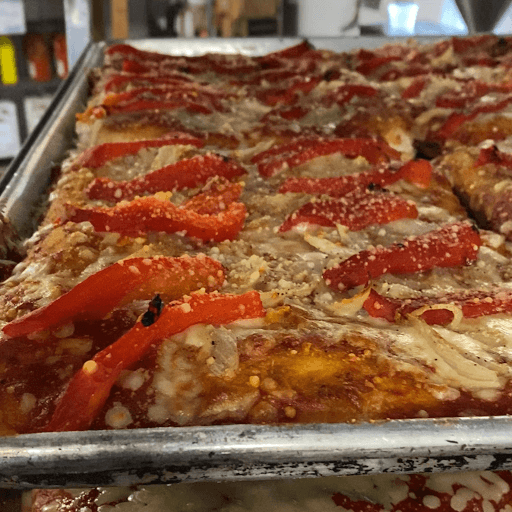
The Best Way to Bake Frozen Roman Pizzas
If you’re lucky enough to have one of our frozen Roman pizzas from Mortadella Head, you’re in for a treat! Our Roman pizzas are made to withstand the high heat of a pizza stone or steel, so I always recommend preheating your baking surface before cooking.
Step-by-Step: How to Bake Frozen Roman Pizza at Home
- Preheat your pizza stone or steel: Place your stone or steel in the oven and preheat at 500°F for at least 45 minutes.
- Prepare your pizza peel: Lightly dust your pizza peel with cornmeal or flour to prevent sticking.
- Place the pizza: Once the oven is preheated, slide your frozen Roman pizza onto the hot surface.
- Bake for 10-12 minutes: Keep an eye on the pizza to ensure the crust is crisp and the toppings are bubbly. You may need to rotate the pizza halfway through cooking for even browning.
- Enjoy your perfect Roman pizza: Once done, remove the pizza with your peel, slice it up, and enjoy!
Personal Preferences: Which Option is Best for You?
Ultimately, the choice between a pizza stone, steel, or pan comes down to your personal preferences and how much you want to invest in the pizza-making process.
- For the serious pizza lover: If you’re all about creating restaurant-quality pizza with a crisp, airy crust, go for the pizza steel. It’s durable, heats up quickly, and delivers unbeatable results.
- For the casual home cook: A pizza stone is a fantastic option that’s more affordable than steel but still offers great heat retention and a crispy crust.
- For the beginner: A pizza pan is a good starting point. It’s simple to use, easy to clean, and won’t require preheating.
There’s no one-size-fits-all answer when it comes to making pizza at home. Whether you’re using a pizza steel, stone, or pan, each has its own advantages. What matters most is the delicious pizza that comes out of the oven.
At Mortadella Head, we’ve taken the guesswork out of pizza night with our frozen Roman pizzas, designed to bake perfectly on any surface you choose. So, grab your pizza peel, preheat your stone or steel, and get ready to enjoy some of the best pizza you’ve ever had in the comfort of your own kitchen.
No matter which tool you choose, the most important ingredient is the love you put into making it. Happy pizza making!

